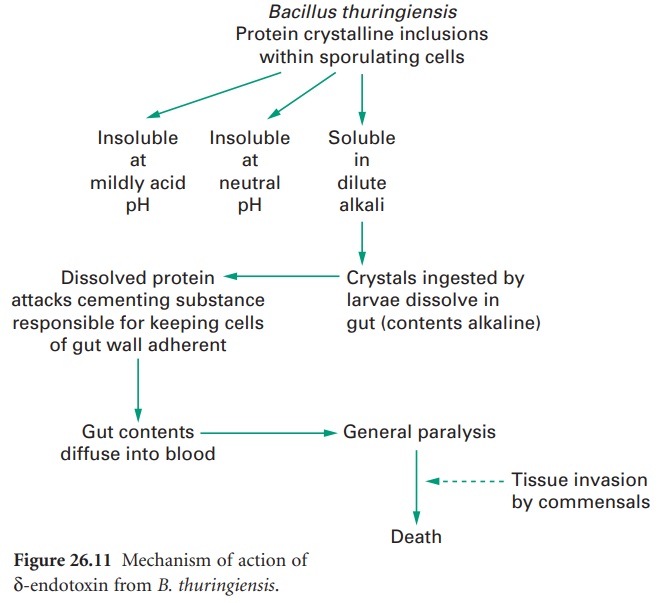Insecticides
| Home | | Pharmaceutical Microbiology | | Pharmaceutical Microbiology |Chapter: Pharmaceutical Microbiology : The Wider Contribution Of Microbiology To The Pharmaceutical Sciences
Like animals, insects are susceptible to infections, which may be caused by viruses, fungi, bacteria or protozoa. The use of microorganisms to spread diseases to particular insect pests offers an attractive method of biological control, particularly in view of the ever-increasing incidence of resistance to chemical insecticides.
INSECTICIDES
Like animals,
insects are susceptible to infections, which may
be caused by viruses, fungi,
bacteria or protozoa.
The use of microorganisms to spread diseases
to particular insect pests offers
an attractive method
of biological control, particularly in view of the ever-increasing incidence of resistance to chemical insecticides. However, any microorganism
used in this
way must be highly virulent, specific for the target pest
but non-pathogenic to animals,
humans or plants. It must be economical to produce, stable on storage
and preferably rapidly
acting. Bacterial and viral pathogens have so far shown
the most promise.
Perhaps the best
studied, commercially available insecticidal agent is B. thuringiensis. This insect pathogen
contains two toxins of major importance. The δ-endotoxin is a protein
present inside the bacterial cell as a crystalline inclusion within the spore case.
This toxin is primarily active against the larvae of lepidopteran insects
(moths and butterflies). Its mechanism of action is summarized in Figure 26.11. Commercially available
preparations of B. thuringiensis are
spore–crystal mixtures prepared as dusting powders. They are used
primarily to protect commercial crops from destruction by caterpillars and are surprisingly non-toxic
to humans and animals.
Although the currently available
preparation has a rather
narrow
spectrum of activity, a variant B. thuringiensis strain has been isolated
and found to produce a different
δ-endotoxin with activity against coleopteran
insects (beetles) rather
than lepidopteran or dipteran (flies
and mosquitoes) insects.

The second B.
thuringiensis toxin, the β-exotoxin, has a
much broader spectrum
encompassing the Lepidoptera, Coleoptera and Diptera.
It is an adenine nucleotide, probably an ATP analogue that acts by competitively
inhibiting enzymes that catalyse the hydrolysis of ATP and pyrophosphate. However, this compound is toxic when administered to mammals, so commercial preparations of the B.
thuringiensis δ-endotoxin are obtained from strains that do not produce the β-exotoxin.
Strains of B. sphaericus pathogenic to mosquitoes were isolated several years
ago. Strains of this organism
with increased toxicity to mosquitoes have
been isolated and might have considerable potential as
control agents. Commercially available
formulations of B. sphaericus are now available as larvicides.
Other insect
pathogens are being
evaluated for activity against insects that are vectors for diseases such as sleeping
sickness, as well as those that cause
damage to crops. Viruses may well have the greatest potential for insect control as they are host-specific and highly virulent, and one infected insect
can release vast numbers of virus particles into the environment. They have already
been used with considerable success against the spruce sawfly
and pine moth.
Related Topics
